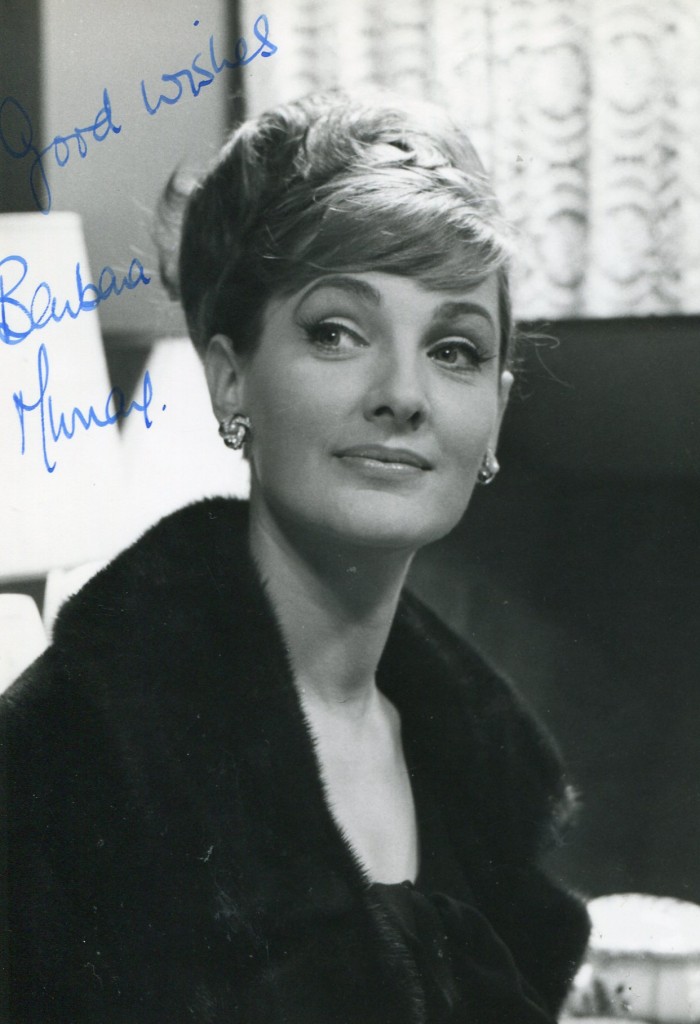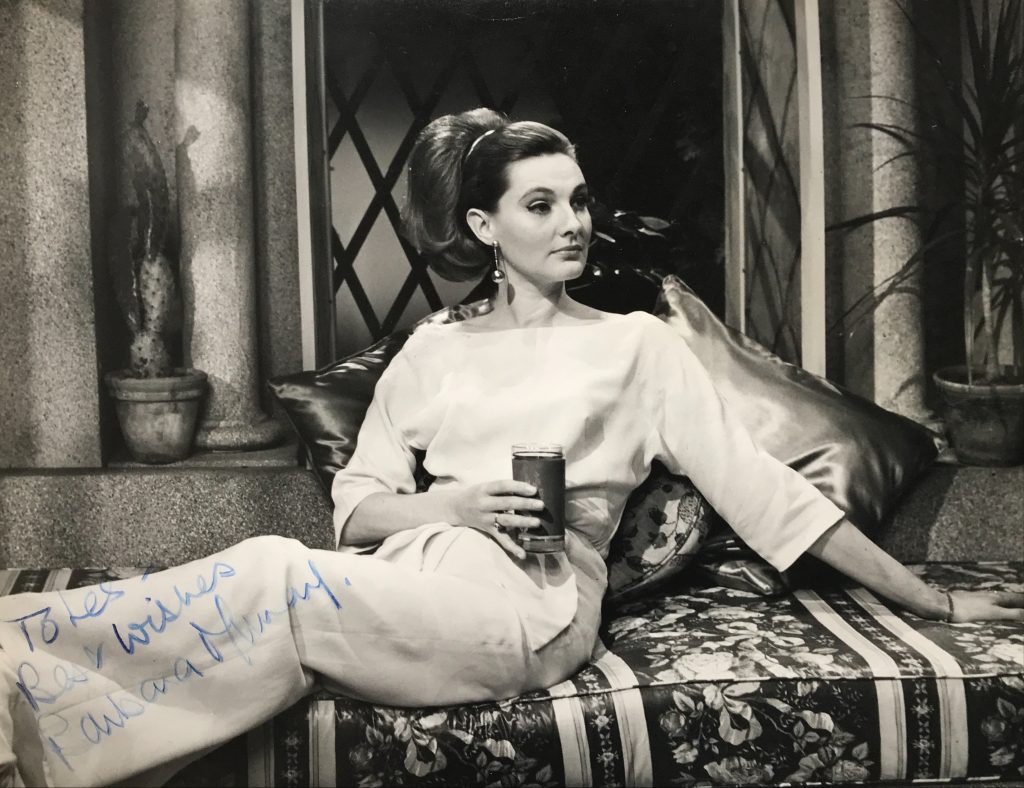

The Times obituary in 2014.
Reviewing the classic Ealing comedy Passport to Pimlico in May 1949 the film critic Dilys Powell noted “a pretty and unfamiliar face”. It belonged to 19-year-old Barbara Murray in her first important screen role as Shirley Pemberton, daughter of the greengrocer played by Stanley Holloway, who discovers that Miramount Place, Pimlico, is actually part of Burgundy.
Rationing and postwar austerity are happily pushed aside as the new Burgundians declare independence from Britain. Murray’s delighted Shirley eggs them on with Churchillian rhetoric: “Great stuff, Dad! We’ll fight them on the tramlines, we’ll fight them in the local.” She finds an admirer in the young Duke of Burgundy, but Ealing was reticent about sex and their first tentative attempt at a kiss is sabotaged by noisy cats.
Always elegant and still majestically beautiful in her later years, Murray made more than 25 films, although most were lightweight. She had better luck on the stage, where she appeared consistently and often effectively until she was in her seventies, while on television her Pamela Wilder in The Plane Makers and The Power Game was still remembered decades later. The part of Wilder was originally a temporary one and, Murray confessed: “I wasn’t entirely happy with the character at the start. I felt it was a series written by men for men and the women weren’t real.”
The show’s creator, Wilfred Greatorex, recalled: “Pamela Wilder was a socialite in a large country house getting bored stiff while her husband zoomed all over the world. Barbara suggested that we add a sense of humour and that a woman like Pamela would want to improve her existence instead of sticking in her shell.” That meant men and drink. Pamela was always smartly dressed and her clothes inspired a fashion collection.
Murray’s earnings from the programme enabled her to buy her own home, in Richmond upon Thames, Surrey. She said in 1969: “I’ve been insecure, broke and unhappy, and having a house of my own always seemed the big unattainable.” Her other TV roles included Lady Utterwood in an adaptation of Shaw’s Heartbreak House, opposite John Gielgud, Sian Phillips and Daniel Massey, and in the 1980s she starred as Lydia, an ageing beauty, in The Bretts

